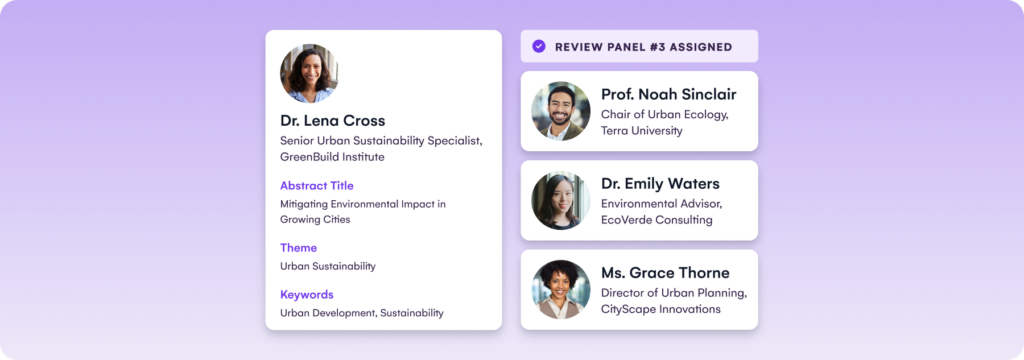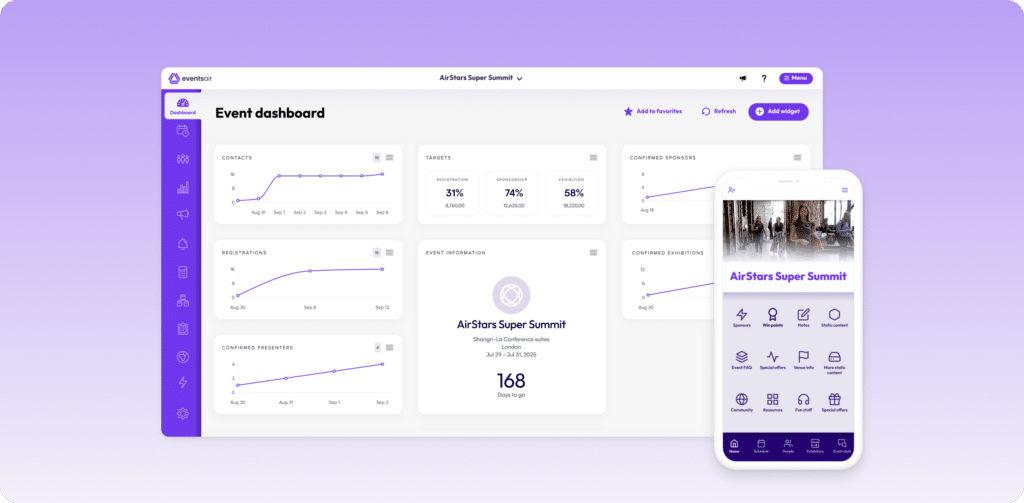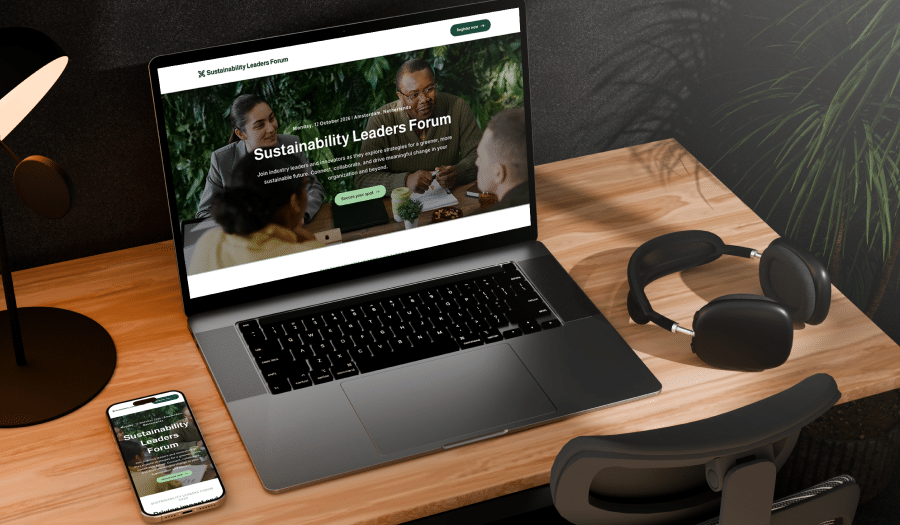
Medical congresses bring together healthcare professionals, researchers, and industry leaders in-person or virtually to present studies, share findings, and shape clinical practice.
But are they any different from other congresses in terms of complexity and scale? Do you require special processes or tools to plan and execute one?
Fortunately, in this EventsAir guide we provide answers to those questions. We explain what a medical congress is, share well-known examples, outline why it’s important, and, more importantly, show you how to plan one effectively.
What is a medical congress?
A medical congress is a formal event where healthcare experts come together to present research, discuss clinical updates, and address key topics in medicine. Medical associations, institutions, or governing bodies often run these events.

They can take place over several days in person, virtually, or as a mix of both, with key activities like:
- Scientific sessions where researchers present new findings
- Panel discussions on pressing topics and clinical practice
- Workshops focused on hands-on skills or emerging methods
- Exhibitions where companies showcase tools, products, or technologies
Who attends a medical congress?
Medical congress attendees typically include physicians, surgeons, researchers, pharmaceutical representatives, medical device companies, policy makers, and educators.
Each group brings its own goals, but all contribute to raising the standard of care in their fields.
Medical congress vs. Medical conference vs. Medical summit
Medical congresses, conferences, and summits are closely related but aren’t the same. The difference usually comes down to size, format, and purpose.
- Medical congress: A large, multi-day event run by associations or societies. It features research presentations, panel sessions, abstract reviews, and exhibitions.
- Medical conference: A broader term that includes many types of medical events. These often focus on continuing education, networking, and updates in specific areas.
- Medical summit: A smaller, topic-driven meeting where selected experts or stakeholders gather to solve problems, align strategies, or set industry direction.
What makes a medical congress valuable to attendees?
- Access to the latest research data: Attendees hear about new studies, clinical trial results, and medical breakthroughs in congresses before they are published, allowing them to stay current in their specialty.
- Peer-to-peer networking opportunities: Having specialists, researchers, and decision-makers in the same space opens up professional connections and collaboration opportunities.
- Hands-on learning experiences: Workshops and technical sessions help attendees sharpen clinical skills, explore procedures, and apply research findings in practical ways.
- Early exposure to new technology: Exhibitions offer a first look at medical devices, tools, and digital platforms changing how care is delivered.
- Opportunities to build credibility: Presenting research, chairing panels, or leading discussions raises a professional’s profile and supports long-term career growth.
Examples of prominent local and international medical congresses
Here are some prominent medical congresses, each with its name, organizing body, location or format, and key features:
| Congress name | Organizing body | Location/Format | Key features |
| European Congress of Virology (ECV) | European Society for Virology (EuSV) | Rotates across European cities; in person | Virus research, networking, early-career engagement |
| ACS Clinical Congress | American College of Surgeons (ACS) | Rotates across US cities; in person and virtual | CME credits, surgical education, hands-on training |
| European Congress of Radiology (ECR) | European Society of Radiology (ESR) | Held annually in Vienna, Austria; in person and online | Imaging innovation, AI, large-scale sessions |
| European Emergency Medicine Congress (EUSEM) | European Society for Emergency Medicine (EUSEM) | Rotates across Europe; in person | Emergency medicine focus, simulation events, workshops |
| ESC Congress | European Society of Cardiology (ESC) | Rotates across Europe; in person and virtual | Global cardiology, World Congress of Cardiology, tech showcases |
| World Congress of Nephrology (WCN) | International Society of Nephrology (ISN) | Rotates globally; in person and hybrid | Global kidney health, policy forums, educational tracks |
| International Congress of Uro-Oncology | Confederación Americana de Urología (CAU) | Held annually in São Paulo, Brazil; in person | Urological oncology, multidisciplinary sessions |
| Congress of the EAN | European Academy of Neurology (EAN) | Rotates across European cities; in person and virtual | Neurology innovation, research presentation, top experts |
| ICE (Intl. Congress of Endocrinology) | International Society of Endocrinology (ISE) | Rotates globally; in person and hybrid | Hormonal health, diabetes, global endocrinology updates |
How to plan a medical congress effectively
Step 1. Define the congress goals, timeline, and audience
When it comes to your event planning timeline, start with clarity. What is the congress meant to achieve? Are you focused on sharing research, driving clinical conversations, or aligning experts? How long do you have to plan?
Once you’ve answered this question, define who it’s for. Be specific about roles, specialties, and regions. Here are some relevant questions to ask here and early:
- What medical problem or question is the congress addressing?
- Who needs to be in the room to move it forward?
- What type of content will speak to their goals?
This step is important because it shapes everything that follows.
Step 2. Assemble the planning committee and assign roles
Get the right people in place early. Every delay in decision-making traces back to unclear roles or missing ownership.
You’ll need leads for crucial units like:
- Scientific content and abstract workflows
- Logistics and tech
- Marketing and sponsorship
Each lead should fully own their stream, with cross-checks built in. For example, the logistics lead should coordinate with the content lead to ensure room setups match session needs.
Step 3. Develop the scientific and educational program
In a medical congress, the program isn’t just content; it’s why people attend. It must be evidence-based, peer-reviewed, and aligned with current clinical realities.
Define the theme
Start by outlining core themes. Are you focusing on new treatment protocols? Emerging data in a sub-specialty? Interdisciplinary care? These themes shape your call for abstracts, session structure, and speaker selection.
Decide on your abstract workflow
Abstract handling is a central part of any medical congress. Set up the workflow early to avoid bottlenecks. You’ll need tools that support blinded reviews, track revisions, and flag conflicts of interest.
If you’re using EventsAir, our built-in abstract management functionality simplifies this with features like:

- A presenter portal for detailed abstract submissions
- A reviewer portal for scoring and comments
- Auto-assignments based on themes, topics, or keywords
- Real-time tracking of review progress
- Efficient session allocation and agenda builder
- Automatic agenda updates across platforms
Build and balance the agenda
Every medical congress needs an agenda to steer the program correctly. For best results, adopt an agenda packed with mixed formats like:
- Plenaries for late-breaking research or guideline updates
- Case-based panels for real-world application
- Workshops for procedural skills development
- Poster walks for in-depth data review
Your scientific committee should lead content curation with a clear timeline for reviews, revisions, and speaker coordination.
Step 4. Select the venue and format
Venue and format decisions shape the attendee experience. For medical congresses, these choices affect accessibility, engagement, and content delivery.
Choose your medical congress format
You have three options here:
- Hybrid medical congresses: Reach a wider audience, give attendees more flexibility, and balance both physical and digital experiences.
- In-person medical congresses: Encourage real-time interaction, deeper networking, and hands-on learning opportunities.
- Virtual medical congresses: Keep costs down, improve accessibility, and make it easy for attendees to join from anywhere.
TIP: Let your goals, audience location, and budget determine this choice.
Plan based on your congress format
If you’re planning an in-person or hybrid event, focus on:
- Venue: Choose a location that’s easy to access and suits your event size.
- Technology: Make sure AV, internet, and event systems work smoothly together.
- Accessibility: Ensure the venue supports attendees with different needs.
- Capacity: Pick a space that comfortably fits your expected crowd.
For virtual medical congresses, you need to prioritize event platforms that offer:
- Live streaming: High-quality video and audio.
- Engagement tools: Q&A, polling, and chat functionalities.
- Networking features: Virtual meeting rooms and attendee directories.
Why EventsAir?
EventsAir is built to handle all three formats – virtual, in-person, and hybrid – with ease:

- All-in-one platform: Manage registrations, payments, sessions, content, and engagement in one place.
- Flexible setup: Customize the platform to match your event goals and branding.
- Live insights: Get real-time data to help you adjust and improve on the go.
- Reliable support: Count on expert help to keep everything running smoothly.
With EventsAir, you can confidently plan a medical congress that meets your needs and exceeds your attendees’ expectations.
Step 5. Implement a marketing and registration strategy
To make your medical congress a success, you need to reach the right people and make it easy for them to sign up. Here’s how you can do this:
- Design a targeted marketing campaign: Speak directly to the attendees’ interests. You can use a mix of event websites, email newsletters, professional networks, and social media to get your message across.
- Build a simple, clear registration process: Make the registration form quick and easy by asking only for essential details. Ensure it’s accessible on any device and guide attendees through each step clearly to avoid confusion.
If you’re using EventsAir, you can manage both registration and promotion from one place. Our platform lets you:
- Create branded event websites
- Set up automated emails
- Track registrations in real-time
Medical congresses like Healthcare Supply Chain Conference, ANZAHPE (Australian and New Zealand Association for Health Professions Education) 2024, AMA24 Conference, and HSR 2024 Conference have all hosted their event websites using our platform.
We save you time and keep everything running smoothly.
Step 6. Conduct post-congress evaluation and follow-up
The congress experience continues after the last session ends. Follow these steps to conduct an effective follow-up:
- Send targeted surveys to attendees, speakers, and sponsors to gather useful feedback.
- Review engagement data, such as session attendance and Q&A activity.
- Meet with your team to discuss key takeaways and lessons learned.
- Share highlights with participants to maintain momentum.
Again, EventsAir simplifies post-event follow-ups with in-built features like detailed event reporting and feedback collection.
Conclusion
Planning a medical congress takes structure, expertise, and the right tools. From setting goals to managing abstracts and delivering hybrid experiences, each step matters. That’s where EventsAir fits in.
EventsAir is built for complex, content-heavy events like medical congresses. It supports hybrid, virtual, and in-person congresses, with abstract workflows, presenters and speakers, attendee engagement, and post-event reporting, all in one platform.
Event Planning & Management | Event Technology & Apps
See EventsAir in action
Discover why 12,000+ event professionals trust EventsAir to deliver effortless events, every time.




